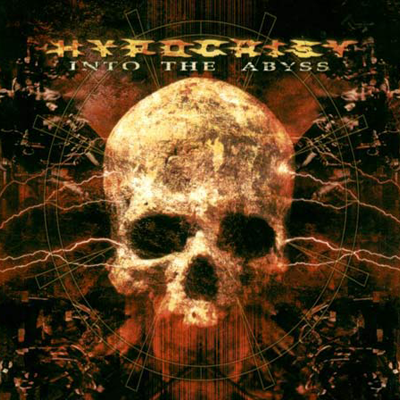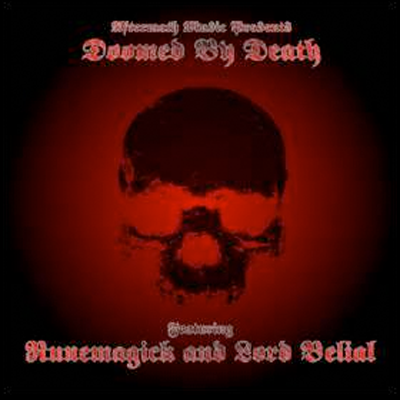
KATAKLYSM, Serenity in Fire (2004, Nuclear Blast)
The skull:
It’s been a while since the last real Photoshop abomination here at Skull HQ, so this truly abysmal effort is almost a welcome reminder of just how fucking dumb a skull can be. Really, it’s hard to imagine how the snake here could look less like it was actually coiled in and around the skull, which is itself glowing, for some reason, and nearly transparent, for some other reason. The (serene?) fire is terrible, and the crosses (also mysteriously transluscent) look like stone and shouldn’t be burning at all. And of course, the background and general palette are best described as “warm shades of brown.” When all these shitty digital collage covers were coming out in the mid aughts, I guarantee every band that used them thought they were so fucking badass, but I thought, “In ten years, these will all look completely ridiculous.” I was totally right.
The music:
There are some albums on the great list of big dumb skulls that completely intimidate me as they heave into view on the spreadsheet. It’s not because the albums are sure to be terrible; terrible albums are the most fun to review. And it’s not because the albums are so good that adequately capturing their excellence in a 200 word review is paralyzingly daunting; that basically never happens with skull albums. It’s because these discs, which are usually released by one of the bigger metal labels, are so middle of the road, so predictable, so completely as-expected that it’s nearly impossible to muster the energy to even listen to them, let along write about them. Serenity in Fire, it won’t surprise you to read, is a perfect example of this phenomenon. Modern Kataklysm (defined as post-Victims of This Fallen World) are not a terrible band by any stretch, but there’s absolutely nothing about them that appeals to me. They sound like pretty much every other legacy death metal band, somewhere in the middle of Morbid Angel, Deicide, and Immolation, with an occasional nod to European melodic death. All these bands have terrible triggered drums and singers trying entirely too hard to sound like evil men. They all abuse the privilege of pinch harmonics and blast for no good reason. But, they all more or less write “songs” in a traditional sense, and for this reason alone I should at least sort of appreciate them, when so many of today’s death metal bands dispense with arrangement altogether in favor of a formless sequence of interchangeable riffs. I don’t, though; I just can’t bring myself to give a shit about Kataklysm and their ilk. They bore me to death, ever and anon. And so, even though I forced myself to listen to this entire fucking album, I just can’t muster the energy to say anything specific about it. It came and it went, leaving nothing in its wake.
— Friar Johnsen





